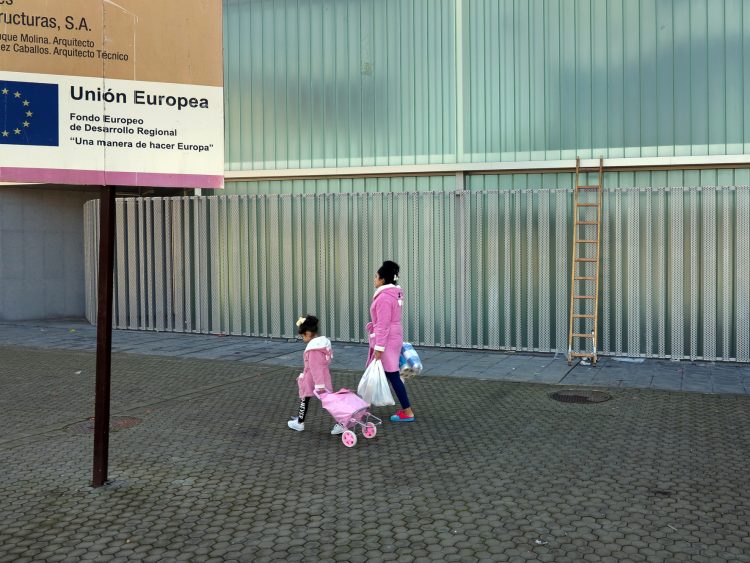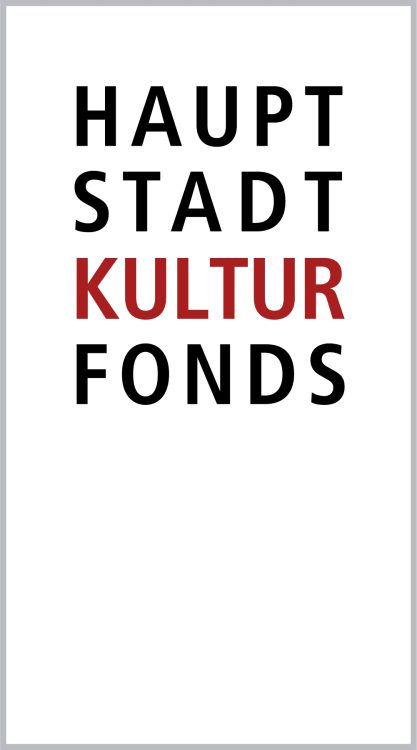Nihad Nino Pušija: In Search of Eldorado – Roma and Sinti in the Struggle for Representation

From the series That’s how it is with us, Seville, Spain, 2018 © Nihad Nino Pušija
ERIAC presents the monograph by Nihad Nino Pušija: In Search of Eldorado – Roma and Sinti in the Struggle for Representation, edited by Rena Rädle & Vladan Jeremić. A related exhibition curated by RomaMoMA, featuring a selection of Pušija’s photography, showcasing over 30 years of Roma representation, will be held at the European Roma Institute for Arts and Culture on November 8th in the presence of the artists and contributors to the publication. The opening night will also be graced by Delaine Le Bas, who was nominated for the Turner Prize this year.
ERIAC – European Roma Institute for Arts and Culture
Friday, November 8, 2024
18:00 – 19:00 Presentation of the monograph Nihad Nino Pušija: In Search of Eldorado – Roma and Sinti in the Struggle for Representation and conversation with the authors and editors Rena Rädle & Vladan Jeremić, Suzana Milevska, Moritz Pankok, André Raatzsch
19:00 Opening of the exhibition Nihad Nino Pušija: In Search of Eldorado
19:30 Performance by Delaine Le Bas (Turner Prize 2024 nominee)
20:00-22:00 Reception with live accordion music by Dejan Jovanovic
The monograph presents a selection of Nihad Nino Pušija’s artistic work spanning more than three decades. It focuses on those photographs from his diverse body of work that have been taken of and with people who identify predominantly as members of the Roma community. These are pictures that express the photographer’s emotional connection and closeness to the people portrayed. Over the years, a visual archive has emerged that also represents an intimate chronicle of the struggle for political participation and cultural representation of Sinti and Roma. As a photographer interested in the micro-histories of the people in his immediate surroundings, Nino explores the possibilities of breaking through the visual canon of photography of Sinti and Roma, which is characterised by ethnicisation, clichés and typologisation. For him, photography is a tool that can contribute to the self-representation of marginalised people. On the one hand, there are the portraits that he arranges according to the wishes of his counterparts, with the subtle difference that these photographs are not intended for private memory only, but become part of a “public family album”. In other works, such as his photo-novellas, concrete experiences of the people portrayed are given expression. It becomes clear that Nino’s artistic practice always offers a means to articulate and overcome the existential problems and marginalisation faced by a large part of the Sinti and Roma community in Europe.
The essays in the monograph are contributed by writers who have long been close followers of Nihad Nino Pušija’s work. In her essay, Suzana Milevska problematises notions of identity and community, before examining how self-representation is made possible in Nino’s work. She stresses that his photographic research focuses on the intersection between pressing political events and people’s personal destinies. Milevska finds the greatest potential in the performativity of photography and explains how Nino’s participatory approach allows for the co-construction of the image of a new Roma subjectivity. Moritz Pankok contributes a personal view of Nino’s work, providing an insight into the significance of his work for the Berlin Roma art scene. André Raatzsch and Emese Benkö refer to the exhibition, “50 Photographs without Anti-Roma Racism”, curated by Raatzsch, and discuss the possibility of overcoming racist stereotypes in photography. They argue that the true meaning of Nino’s photography only becomes apparent when viewers understand that it points beyond their own preconceived notions. Hedina Tahirović-Sijerčić’s touching poems resonate with Nino’s images. In their own unique way, they speak of the search for Eldorado.
Timea Junghaus, art historian and executive director of the European Roma Institute for Arts and Culture writes about Pušija in the Preface of the monograph:
“I met Nihad Nino Pušija first in 2006, while organising the First Roma Pavilion at the Venice Biennale.
(…)
Even at first glance, the outstanding quality of his photographs impressed me, and I found him remarkably talented in capturing interesting light conditions in his black and white photography; moreover, his talent shone through in his way of transmitting the individuality and character of his subjects. I immediately saw that he is a Baro Manouch – a good-hearted man, building genuine connections and deep friendships, humble and kind, serving our community as a self-pro[1]claimed “family/community photographer”
_____________
Nihad Nino Pušija, born in 1965 in Sarajevo, Bosnia and Herzegovina, is an artist and photographer. His work focuses on documentary and portrait photography and aims to capture Roma identity in Europe, particularly in Berlin, where he has been based for the past thirty years. Since 1992, with the support of nGbK: neue Gesellschaft für bildende Kunst (New Society for Visual Art), Berlin; Museum Europäischer Kulturen (Museum of European Cultures), Berlin; ERIAC: European Roma Institute for Arts and Culture; and Allianz Kulturstiftung (Allianz Cultural Foundation), Nihad Nino Pušija has been working on various art projects and photographic research. His main topics include the politics of recognition, minority positions in contemporary artistic and curatorial practice, Southeastern Europe, refugees, conflict resolution, integration, Roma and Sinti in Europe. Pušija’s works have been shown in the First and Second Roma Pavilions at the 52nd and 54th Venice Biennales. He has exhibited widely in Europe and the USA, in museums and galleries, including the National Gallery of Bosnia and Herzegovina, Sarajevo; PEER Gallery, New York; Kölnisches Stadtmuseum (Cologne City Museum), Cologne (D); Mucem: Museum of the Civilisations of Europe and the Mediterranean, Marseille (F); HKW: Haus der Kulturen der Welt, Berlin; Fotobiennale, Rotterdam (NL); Neue Galerie Graz (A); The Dayton Art Institute, Dayton, OH; MEK: Museum Europäischer Kulturen, Berlin; MoCA: Museum of Contemporary Art, Skopje (MK); Schwules Museum, Berlin; ERIAC Space, Berlin; BAK: basis voor actuele kunst, Utrecht (NL); nGbK, Berlin; Crvena galerija, Sarajevo; Paris 61, Paris (F); Collegium Artisticum, Sarajevo; Galerija INA, Zagreb (HR); Galerie im Körnerpark, Berlin; Sokol Art Gallery, Nowy Sacz (PL); Kai Dikhas, Berlin; L’Aubette, Strasbourg (F); Kunstquartier Kreuzberg, Berlin; Centre de la Photographie, Geneva (CH); Kortárs Roma Galéria (Contemporary Roma Gallery), Budapest (H); ECCHR: European Center for Constitutional and Human Rights, Berlin; Tilburgse Kunststichting FAXX, Tilburg (NL); Nagornaja Gallery, Moscow (RU); KunstRaum, Berlin; Museet for Fotokunst, Odense (DK); Galéria Jána Koniarka, Trnava (SK); Galeria Nouă, Bucharest (RO); Galerija ŠKUC, Ljubljana (SI); Svilara Cultural Centre and Serbian National Theatre, Novi Sad (SR); Minoriten Galerien, Graz (A); 2B Gallery, Budapest (H); Studio1 at Kunstquartier Bethanien, Berlin; BrotfabrikGalerie, Berlin; Galerie 35, Berlin; NOB Gallery Kamerni teatar, Sarajevo; Galerija Novi Hram, Sarajevo; Galerie Franz Mehring, Berlin. Pušija’s artworks are in the collections of the City Gallery Collegium Artisticum, Sarajevo; nGbK, Berlin; Kölnisches Stadtmuseum, Cologne; ERIAC, Berlin; Hanns Eisler School of Music, Berlin; Schwules Museum, Berlin; Neue Galerie, Graz; MoCA, Skopje; The Dayton Art Institute, Dayton; Allianz Foundation, Berlin; Museum of Romani Culture, Brno (CZ); Foundation Kai Dikhas, Berlin; MEK, Berlin; National Gallery of Bosnia and Herzegovina, Sarajevo.
_____________
The editors: Rena Rädle is an artist born in Germany, and Vladan Jeremić is an artist and cultural scientist born in Serbia with a PhD from the University of Belgrade. In their collaborative practice as artists, curators and writers, they explore the relationship between art and politics, exposing the contradictions of contemporary societies and exploring the transformative potential of art. For more than two decades, they have been actively involved in the struggles of Roma communities in Serbia and the Balkans, in the field of culture, social rights and housing. They have edited numerous publications dealing with the discrimination of Roma communities, migration and socially engaged artistic practice.
_____________
This project has been made possible through the support of Hauptstadtkulturfonds (HKF), the Berlin Senate Department for Culture and Social Cohesion.


Leave a Reply